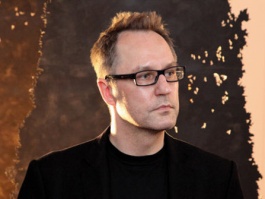
Jiří Fajt will bring the chief curator to the NG
 |
| Adam Budak (1966) |
The new organizational structure is reportedly intended to bring the institution closer to world galleries. The role of the chief curator will primarily be conceptual, coordinative, and methodological, Fajt stated. Today, the management of the NG collections is divided into five units (collections), which according to Fajt, operate too "independently."
"NG has thus lost the awareness that we are one institution with a single legal subjectivity, to which all activities must be subordinated," he said. According to him, NG is not perceived externally as strongly as it should be because of this. The new organizational structure is also expected to strengthen and enhance the NG brand on both the domestic and international scene. Details are to be presented by Fajt together with Budak no later than October.
Adam Budak, originally from Poland, studied theater science in Krakow but has also focused on film and architecture. He studied the history and philosophy of art and architecture at the Central European University in Prague. He worked in Washington for three years; prior to that, he led the contemporary art collection at Kunsthaus in Graz. In addition to solo exhibitions, he was the curator of the Polish pavilion at the architectural biennale in Venice in 2004, and in Prague, he participated in the local biennials of visual arts held by the National Gallery in 2003 and 2005. In 2008, he was among the curators of the traveling exhibition Manifesta, where he included the Czech artist Barbora Klímová in the exhibition.
Whether the establishment of the position of chief curator will mean the end of the positions of directors of individual collections is still unclear. Fajt does not want to specify this, and the current directors do not know yet.
Fajt describes the future organizational model of NG as "curatorial." "Today, NG officially has 40 employees in curatorial positions, who often perform purely administrative and production tasks and therefore have little in common with the actual work of a curator, namely the professional management of the collection section, scientific activity, and creativity aimed primarily at exhibition and publication projects," Fajt elaborates.
He estimates that there could be 12 to 15 curators, with approximately the same number of curatorial assistants. This could also address the issue of graduates' entry-level practices. "In the future, it will no longer be possible for a fresh graduate to come to NG directly as a curator, as they will need to demonstrate significant professional experience and academic renown on the international scene," Fajt stated.
According to him, the strong position of the NG curator would benefit if they were chosen exclusively through an open competition. "And I wouldn't oppose competitions being open to foreign colleagues as well," he added, noting that he would establish the position of guest curator, which is common abroad.
The English translation is powered by AI tool. Switch to Czech to view the original text source.
0 comments
add comment










